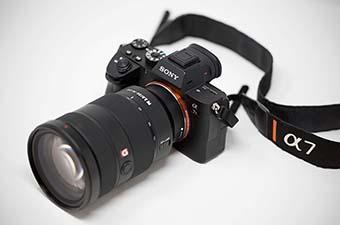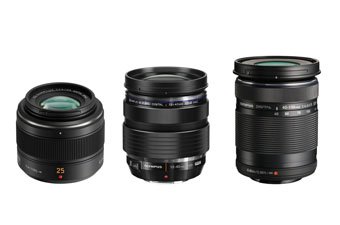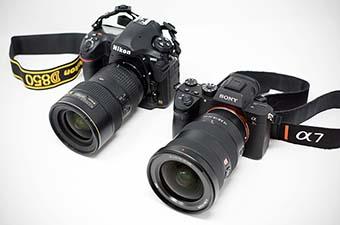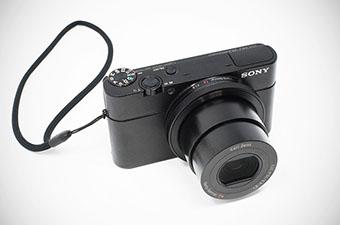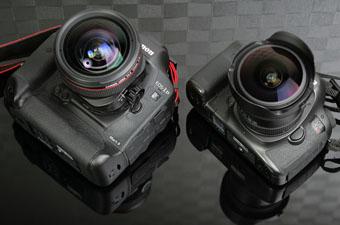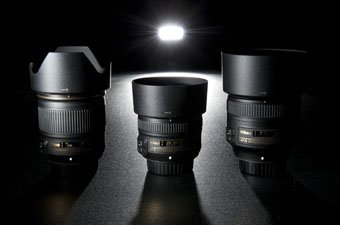The 16.3-megapixel Olympus OM-D E-M1 is one of the leading mirrorless cameras on the market, offering stellar image quality and a number of popular features like weather sealing, Full HD 1080p video capability, and built-in Wi-FI. Below we break down the best lenses for the OM-D E-M1, from wide-angle lenses to macro and telephoto zoom. In addition to Olympus’s growing collection of Micro Four Thirds lenses, Panasonic’s Micro Four Thirds lenses are compatible without an adapter. Remember that the OM-D E-M1 has a 2x crop factor, meaning that you double the focal length for the equivalent on a 35mm camera (for example, a 20mm Micro Four Thirds lens is equivalent to 40mm on a 35mm camera).
Wide-Angle Lenses
Olympus 12-40mm f/2.8 Pro ($899)
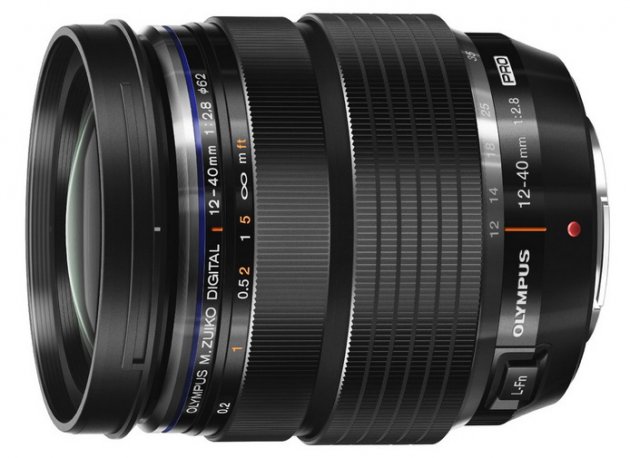 Weight: 13.5 oz.
Weight: 13.5 oz.
Max Aperture: f/2.8
Pros: Weather sealing and impressive low light performance for a zoom lens.
Cons: Cost.
If we hade to get one lens to pair with the OM-D E-M1, it would be the Olympus 12-40mm f/2.8 Pro. This is an extremely impressive lens, featuring a maximum aperture of f/2.8 throughout its zoom range, solid metal construction, weather sealing, and a nifty manual focus ring. With a focal length equivalent of 24-80mm on a 35mm camera, it’s an ideal lens for everything from landscapes to travel and portraits. The only issue is the price, which brings the total cost of the system including the camera body to over $2,000.
See the Olympus 12-40mm Pro
Panasonic Lumix 7-14mm f/4.0 ($881)
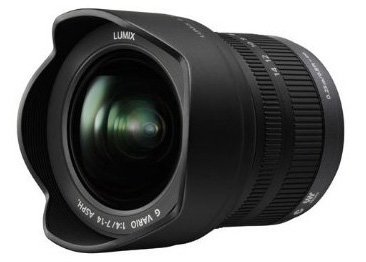 Weight: 10.6 oz.
Weight: 10.6 oz.
Max Aperture: f/4.0
Pros: Ultra-wide angle capability.
Cons: Cost and low light performance.
For professionals and enthusiasts, the Panasonic Lumix 7-14mm is the top ultra-wide-angle zoom lens for the OM-D E-M1. The lens is considerably more expensive and heavier than the Olympus 9-18mm below, but discerning photographers will appreciate the sharpness, build quality, and outstanding images produced by the Lumix 7-14mm. We also like the integrated hood feature. For a prime wide-angle lens with better low light performance, the Olympus 12mm f/2.0 is another quality option that is sharp, fast, has a sturdy all-metal construction, and weighs only 4.6 ounces.
See the Panasonic Lumix 7-14mm
Olympus 9-18mm f/4.0-5.6 ($599)
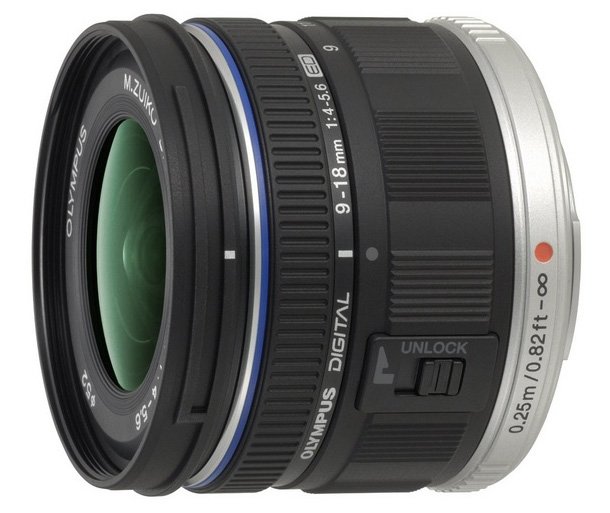 Weight: 5.6 oz.
Weight: 5.6 oz.
Max Aperture: f/4.0
Pros: Lightweight.
Cons: Distortion at the wide end, low light performance.
At a few hundred dollars cheaper than the options above, a good "budget" wide-angle zoom for the OM-D E-M1 is the Olympus 9-18mm f/4.0-5.6. The Panasonic 7-14mm is slightly faster and sharper, but it’s hard to justify spending nearly $1,000 for a Micro Four Thirds lens with a maximum aperture of f/4.0 (this exceeds the cost of superior wide-angle zoom lenses for DSLRs). The Olympus 9-18mm is compact in size and produces images that should satisfy the majority of photographers.
See the Olympus 9-18mm
Everyday and Portrait Lenses
Olympus 17mm f/1.8 ($499)
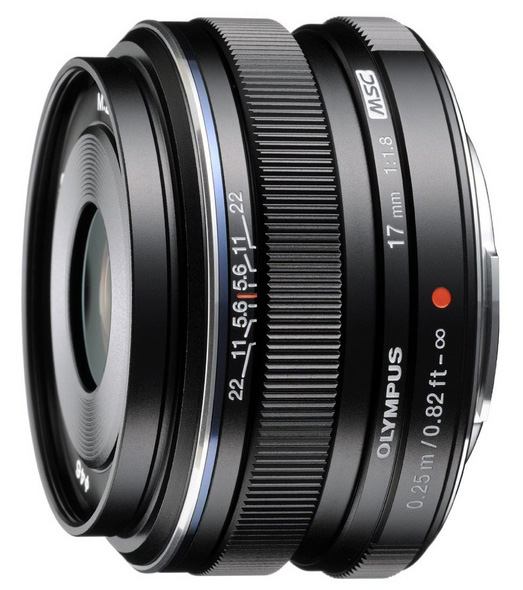 Weight: 4.3 oz.
Weight: 4.3 oz.
Max Aperture: f/1.8
Pros: Low light performance and autofocus.
Cons: Cost.
If you shoot travel or street photography, the Olympus 17mm f/1.8 is a terrific all-around lens with a focal length equivalent of 34mm on a 35mm camera. The lens is sharp, has fast autofocus, great bokeh, and a quality metal build, despite weighing only 4.3 ounces). Those looking for an even cheaper option should try the Olympus 17mm f/2.8, which can't match the low light performance but is about half the price.
See the Olympus 17mm
Panasonic Lumix 20mm f/1.7 II ($428)
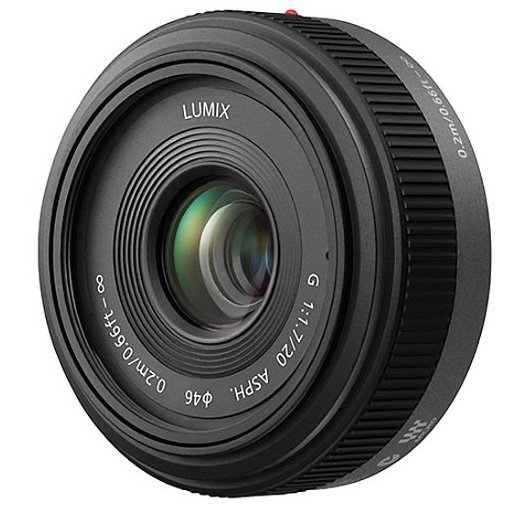 Weight: 3.5 oz.
Weight: 3.5 oz.
Max Aperture: f/1.7
Pros: Sharpness, low light performance.
Cons: Possible banding at high ISOs.
The Panasonic Lumix 20mm f/1.7 II is one of the most popular Mirco Four Thirds lenses on the market (the original version had banding issues when shooting high ISO images and thus was replaced). This pancake-style lens is extremely light at only 3.5 ounces, and despite its compact size, boasts exceptional optics, sharpness, and bokeh. All things considered, you won't find a better value in a lens.
See the Panasonic Lumix 20mm
Panasonic Leica Summilux 25mm f/1.4 ($598)
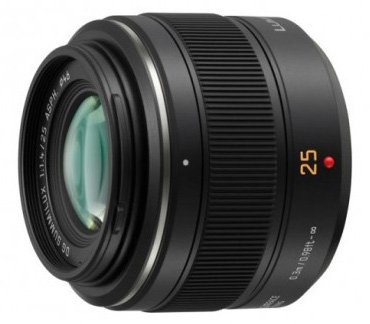 Weight: 7.1 oz.
Weight: 7.1 oz.
Max Aperture: f/1.4
Pros: Sharpness and low light performance.
Cons: None.
Leica makes some of the finest lenses on the planet—the Panasonic Leica Summilux 25mm f/1.4 is the premier portrait lens for the Olympus OM-D E-M1. With a focal length equivalent of 50mm on a 35mm camera, this lens produces outstanding photos and videos including the best low light performance on this list, fast and accurate autofocus, and excellent sharpness (even wide open). For just under $400 you can get the Olympus 25mm f/1.8, which is two-thirds of a stop slower but still a high performing lens.
See the Panasonic Leica 25mm
Olympus 45mm f/1.8 ($349)
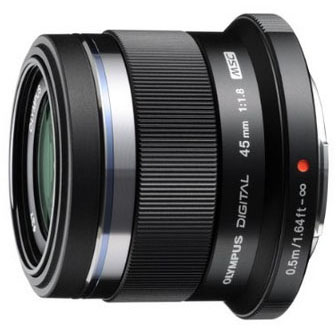 Weight: 4.3 oz.
Weight: 4.3 oz.
Max Aperture: f/1.8
Pros: Lightweight and fast.
Cons: A specialty focal length.
For close-up portraits with the OM-D E-M1, look no further than the Olympus 45mm f/1.8. This lens is sharp, produces creamy bokeh, and vibrant colors. And with a maximum of f/1.8, you’re getting professional level low light performance at a reasonable price. However, one consideration when choosing this lens is the focal length equivalent of 90mm on a 35mm camera, which really is a specialty distance used mostly for head shots. But for photographing kids and family, the 45mm f/1.8 is a great choice.
See the Olympus 45mm
Olympus 12-50mm f/3.5-6.3 ($499)
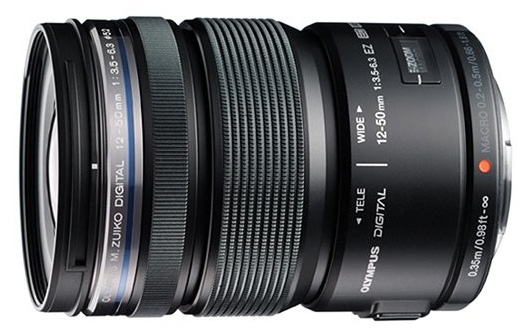 Weight: 7.5 oz.
Weight: 7.5 oz.
Max Aperture: f/3.5
Pros: Versatility.
Cons: Low light performance.
The Olympus 12-50mm f/3.5-6.3 is a versatile everyday lens that covers the majority of the most used focal lengths (you’ll still need a telephoto zoom for a complete set-up). One weakness of the Olympus 12-50mm is its aperture range of f/3.5-6.3—those who frequently shoot in low light may prefer the new Olympus 12-40mm f/2.8 Pro or one of the faster prime lenses. Otherwise, this is a good budget option for the Olympus OM-D E-M1.
See the Olympus 12-50mm
Macro Lenses
Panasonic Leica 45mm f/2.8 ($898)
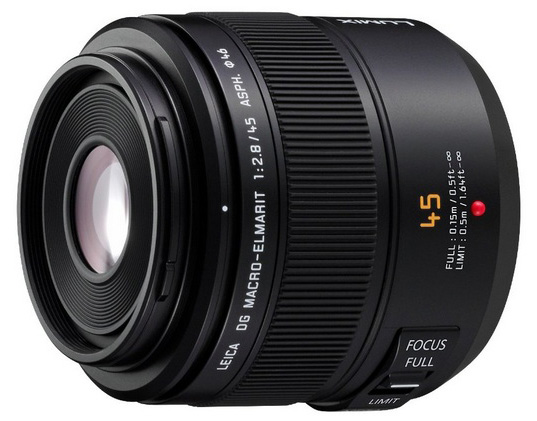 Weight: 7.9 oz.
Weight: 7.9 oz.
Max Aperture: f/2.8
Pros: Superb optical performance.
Cons: Cost.
For macro photography and portraits, the Panasonic Leica 45mm f/2.8 captures exceptional images (at a price). The lens is extremely sharp, produces excellent bokeh, vibrant colors, and has image stabilization for hand held photos. Equivalent to 90mm on a 35mm camera, the 45mm f/2.8 also is relatively lightweight at just under 8 ounces. As with almost all Leica lenses, premium quality comes with a premium price tag, which is the biggest hurdle for most consumers in choosing this lens.
See the Panasonic Leica 45mm
Olympus 60mm f/2.8 ($449)
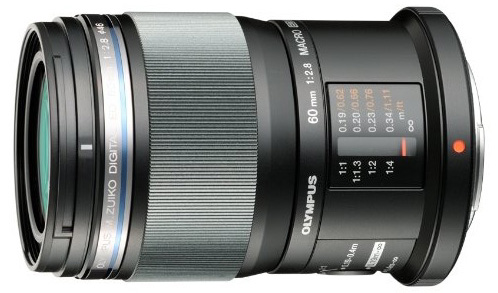 Weight: 6.5 oz.
Weight: 6.5 oz.
Max Aperture: f/2.8
Pros: Cost, weight.
Cons: No image stabilization.
The Olympus 60mm f/2.8 offers similar optical quality to the Panasonic Leica 45mm above with a few shortcomings. One is its focal length of 60mm (equivalent to 120mm on a 35mm camera), which is a bit longer than some photographers prefer for macro photography. Others are its lack of image stabilization and mostly plastic construction (the lens does have a metal mount). But all things considered, we think the Olympus 60mm is a top-flight macro lens and a better value than the Panasonic Leica 45mm. It’s also weather sealed like the OM-D E-M1 (the Panasonic macro lens is not).
See the Olympus 60mm
Telephoto Zoom Lenses
Panasonic Lumix 45-200mm f/4.0-5.6 ($269)
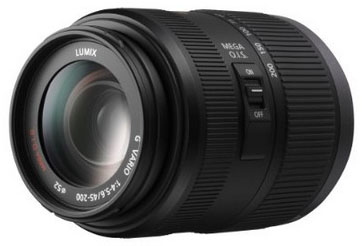 Weight: 13.4 oz.
Weight: 13.4 oz.
Max Aperture: f/4.0
Pros: Great value, lightweight for a telephoto zoom.
Cons: Low light performance.
With a focal length equivalent of 90-350mm on a 35mm camera, the Panasonic 45-200mm f/4.0-5.6 has a longer range than most telephoto zooms for DSLRs. This lens offers a lot of bang for your buck—the autofocus is relatively fast compared to similar lenses, distortion and light falloff are within reason, and the lens is sharp, especially at the heart of the zoom range. It’s also lightweight and features optical image stabilization. For an even cheaper telephoto option, try the Olympus 40-150mm f/4.0-5.6.
See the Panasonic Lumix 45-200mm
Panasonic 100-300mm f/4.0-5.6 ($598)
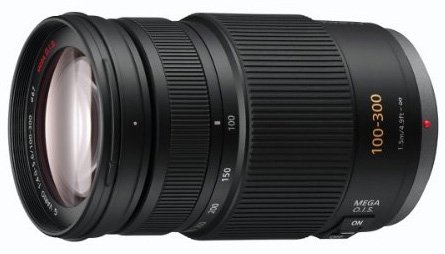 Weight: 18.3 oz.
Weight: 18.3 oz.
Max Aperture: f/4.0
Pros: Image stabilization.
Cons: Low light performance, weight.
With an extra long focal length equivalent of 200-600mm on a 35mm camera, the Panasonic 100-300mm falls into the category of a “super telephoto.” The lens has image stabilization, and with a maximum aperture of f/4.0, this is an important feature. Sharpness can be an issue at the long end, but overall the Panasonic 100-300mm is a quality zoom lens with an impressive range.
See the Panasonic 100-300mm
Olympus OM-D E-M1 Lens Comparison Table
| Lens | Price | Type | 35mm Equivalent | Aperture | Weight |
|---|---|---|---|---|---|
| Olympus 12-40mm f/2.8 Pro | $899 | Everyday | 24-80mm | f/2.8 | 13.5 oz. |
| Panasonic Lumix 7-14mm f/4.0 | $881 | Wide angle | 14-28mm | f/4.0 | 10.6 oz. |
| Olympus 9-18mm f/4.0-5.6 | $599 | Wide angle | 18-36mm | f/4.0-5.6 | 5.6 oz. |
| Olympus 12-50mm f/3.5-6.3 | $499 | Everyday | 24-100mm | f/3.5-6.3 | 7.5 oz. |
| Olympus 17mm f/1.8 | $499 | Everyday | 24-100mm | f/1.8 | 4.3 oz. |
| Panasonic Lumix 20mm f/1.7 II | $428 | Everyday | 40mm | f/1.7 | 3.5 oz. |
| Panasonic Leica Summilux 25mm f/1.4 | $598 | Portrait | 50mm | f/1.4 | 7.1 oz. |
| Olympus 45mm f/1.8 | $349 | Portrait | 90mm | f/1.8 | 4.3 oz. |
| Panasonic Leica 45mm f/2.8 | $898 | Macro | 90mm | f/2.8 | 7.9 oz. |
| Olympus 60mm f/2.8 | $299 | Macro | 120mm | f/2.8 | 6.5 oz. |
| Panasonic Lumix 45-200mm f/4.0-5.6 | $269 | Telephoto | 90-400m | f/4.0-5.6 | 13.4 oz. |
| Panasonic 100-300mm f/4.0-5.6 | $598 | Telephoto | 100-300mm | f/4.0-5.6 | 18.3 oz. |
Editor's Choice
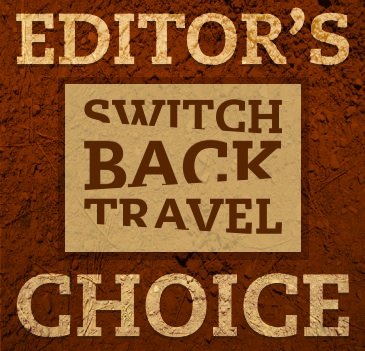
It’s hard to pass on the Olympus 12-40mm Pro. The lens is weather sealed like the E-M1 camera body and performs well in low light, making an awesome kit for travel, the outdoors, and portraits. I also like the 24mm equivalent focal length at the wide end. Fujifilm, for example, is making their zooms with a 27mm equivalent focal length at the wide end, which doesn’t work as well for landscapes and other wide-angle shots. For portraits, I’m grabbing the Olympus 25mm f/1.8, which has great autofocus, a sturdy build, and none of the issues that the 20mm pancake has had in the past. The telephoto end of the spectrum still is disappointing for micro four thirds as all of the lenses are f/4 or below, but I would lean toward the Panasonic Lumix 45-200mm. At least it’s relatively inexpensive and you get image stabilization and a healthy zoom range.

